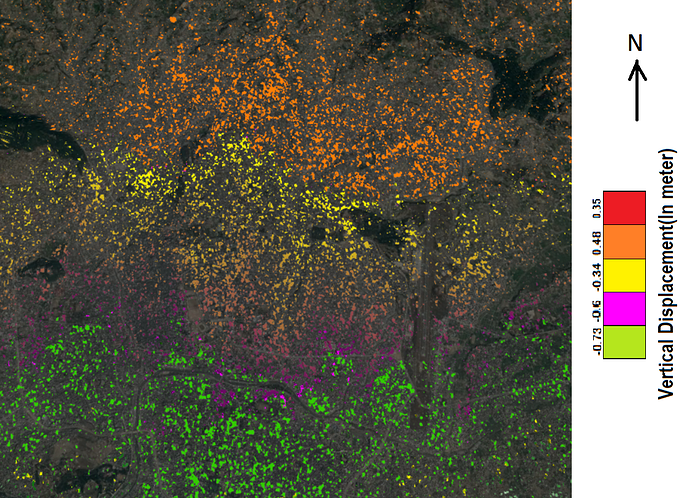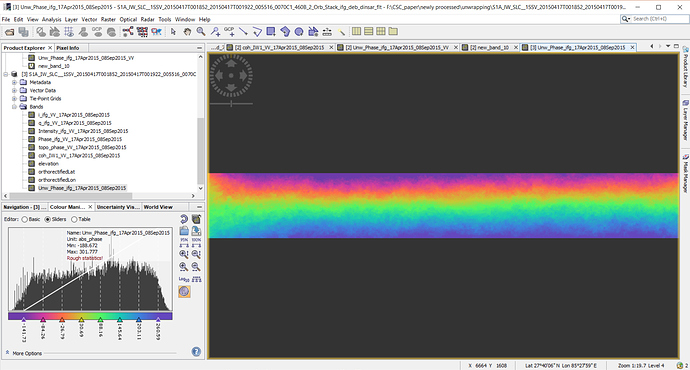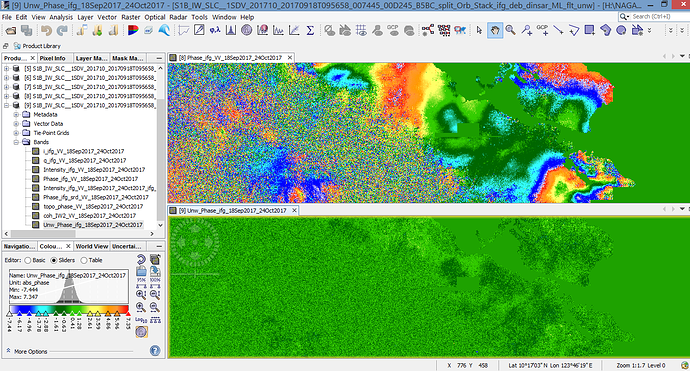finally, I created a vertical displacement map by taking the local incidence angle … looks like its ok for me …
I can’t tell if this result is reasonable because I don’t know the study area or the processes to be expected here.
Do you think it makes sense that the lower part of your study area sank while the upper part uplifted? The fact that the displacement follows exactly the north-south direction is a bit suspicious. One problem is that unwrapping was performed for the whole image while only a few parts are of high coherence. If the high coherence areas are not spatially connected, unwrapping creates just a linear ramp which doesn’t really describe the actual displacement.
How does the unwrapped interferogram look like?
What did you use for snaphu? DEFO, TOPO, SMOOTH?
What caused the displacement in your study area?
my unwrapped interferogram looks like this
and i use DEFO for snaphu…
earthquake causing the displacement of this area …
to me, personally, it looks wrong because it exactly follows th range direction and unwrapping simply formed a surface ranging from top to bottom. There is not much influence of the areas with actual high coherence in the displacement because they are not connected.
Maybe you can try with an image pair of different orbit (ascending or descending) to check if it produces the same pattern.
Have you considered Persistent Scatterer InSAR instead? About the STaMPS category
I think this might be more suitable.
My snaphu unwrapping result is like the one below, above is the result before unwrapping. Seems like my output is wrong. Please help me.
your interferogram is too noisy, this leads to unwrapping errors. The green color can be adjusted in the Color Manipulation tab.


